#360 product photography
Link
#aerial photography#real estate videography#360 photography#360 product photography#real estate photography#aerial photographer#aerial videographer#drone pilot#aerial videography#real estate videographer#drone photography#real estate photographer near me#real estate drone photography#aerial photos of my house#360 degree photography
0 notes
Link
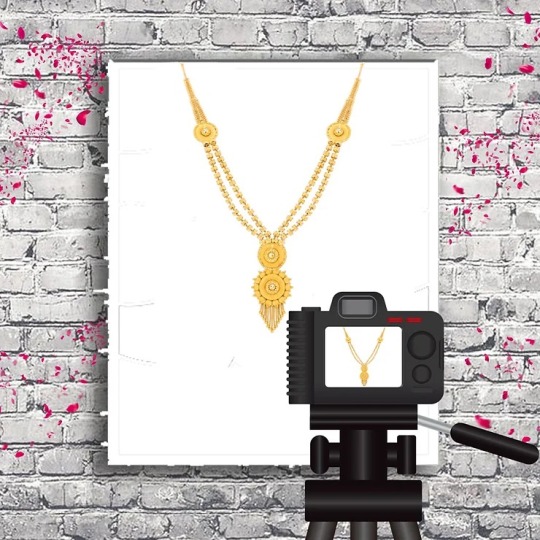
Everyone, as with other design tools, has their own method of using them in jewelry photography. Let's look at some of the most essential tips and tactics that Realizer designers utilize to get better rendering with Keyshot.
#jewellery photography#product photography#diamond jewelry photography#3D Photography services#360 product photography#3d product photography#product photography pricing
1 note
·
View note
Text
360 Degree product photography – Boost Your Ecommerce Sales
If you're an ecommerce business, then you know that product photography is essential to boosting your sales. But what if you took your product photography to the next level with 360 degree product photography?
360 degree product photography allows your customers to see your product from every angle, giving them a better understanding of what they're buying. This can lead to more sales and happier customers.
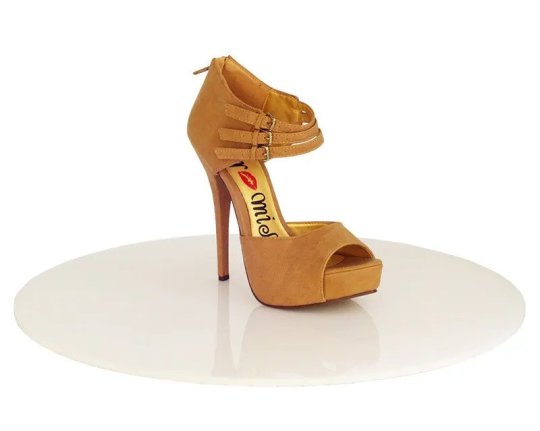
If you're not sure how to get started with 360 degree product photography, don't worry – we've got you covered. In this blog post, we'll share everything you need to know about 360 degree product photography, from the equipment you need to the best ways to showcase your products.
you may read Also: how to start a photography business online
What Is 360 Degree Product Photography?
360 degree product photography is a type of photography that allows the viewer to see the product from every angle. This is done by taking a series of photos from different angles and then stitching them together into one image. This type of photography is often used for products that will be sold online, as it allows potential customers to see the product from all sides.

Why Do You Need 360 Product Photography?
If you are in the process of launching a new product, you might be wondering why you need 360 product photography. There are a few key reasons why this type of photography can be so beneficial. First, it allows potential customers to see your product from all angles. This can be helpful in terms of making a purchase decision. Secondly, 360 product photography can help to improve your search engine optimization (SEO). This is because potential customers will be able to find your product more easily online. Finally, 360 product photography can simply make your product look more appealing and professional. Ultimately, it is up to you to decide whether or not 360 product photography is right for your business. However, it is definitely worth considering if you want to give your product the best chance of success.
Complete View
Complete View is an online platform that helps businesses track and manage their customer data. It provides a complete view of customer data, including contact information, purchase history, and customer interactions. Complete View also offers a suite of tools to help businesses segment and target their customers, and track and analyze customer behavior.
Growth of business
The growth of businesses is essential for the economy. It allows for the creation of jobs and the production of goods and services. Businesses can grow through the expansion of their operations, the introduction of new products and services, or the acquisition of other businesses. The growth of businesses can be a challenge, but it is essential for the economy to prosper.
Read More: https://www.thekickassentrepreneur.com/tactics-how-to-organize-photography/
Brand value
There is no denying that brand value is an important metric for businesses. It can be used to gauge customer loyalty, perceived quality, and overall brand strength. While there are a number of ways to measure brand value, one of the most common is through brand equity. Brand equity is the value of a brand above and beyond the sum of its parts. In other words, it's the "x-factor" that makes a brand special and unique. While it can be difficult to quantify, there are a number of methods businesses can use to try to measure brand equity. These include customer surveys, focus groups, and brand tracking studies.
Customer involvement
Customer involvement is a key component of successful businesses. By involving customers in the decision-making process, businesses can ensure that they are meeting the needs and wants of their customers. Additionally, customer involvement can help businesses to build loyalty and create a community around their brand. There are many ways to involve customers, such as through surveys, focus groups, and social media. By taking the time to involve customers, businesses can reap the many benefits that come with it.
Flexible
Flexible is an adjective that describes someone or something that is able to bend or be bent easily without breaking. It is often used to describe materials such as rubber or plastic. When something is flexible, it can be bent or twisted into different shapes without breaking.
You may read Also: how creative clothing product photography
Who should use 360-degree product photography?

360-degree product photography is a great option for businesses that want to display their products in an interactive way. This type of photography allows customers to view products from all angles, which can be helpful when making a purchase decision. 360-degree product photography can be used on websites, in catalogs, and in brick-and-mortar stores.
360-degree photography for Fashion Industry:
360-degree photography is a type of photography that allows you to capture an image in every direction. This type of photography is often used in the fashion industry to give customers a full view of the clothing or accessory they are interested in. 360-degree photography is a great way to show off the details of a garment or product and can be used in both online and offline marketing campaigns.
360-degree photography for Tools:
360-degree photography is a form of photography that allows you to capture an entire environment in a single image. This type of photography is often used for virtual tours, as it allows viewers to explore a space as if they were actually there. 360-degree photos can be taken with special 360-degree cameras, or by stitching together multiple regular photos to create a panorama.
360-degree photography for Tech and wearables:
360-degree photography has been around for a while, but it's only recently that the technology has become small and sophisticated enough to be used in wearable devices. The latest 360-degree cameras are capable of capturing high-resolution images and videos, and they can be linked to other devices such as smartphones and computers for easy sharing.
Wearable 360-degree cameras have a number of potential applications, from helping people capture memories of special events to giving first-person views of extreme sports and other activities. The technology is also being used by businesses for marketing and training purposes. For example, retailers are using 360-degree photos and videos to give customers a virtual tour of their stores, and manufacturers are using the technology to create virtual reality experiences for their employees.
360-degree photography for Retail:
In today's Retail market, it's all about creating an immersive experience for potential customers. And one way to do that is with 360-degree photography. This type of photography gives customers a full view of a product, as if they were right there in the store. It's a great way to show off products in all their glory, and it can help customers make better informed decisions about what to buy.
360-degree photography for Cars:
A 360-degree photograph is an all-encompassing image that captures the entirety of a scene. This type of photography is often used to document cars, as it allows the viewer to see the vehicle from every angle. 360-degree photos can be taken with special cameras that rotate around the subject, or by stitching together multiple images. This type of photography can be tricky to execute, but the results are well worth the effort.
360-degree photography for Furniture:
A 360-degree photograph is a panoramic image that shows an entire environment. It is usually taken with a special camera that has a rotating lens that allows the photographer to capture a full view. This type of photography is often used for real estate or product photography. It can be used to show off a room or piece of furniture from every angle.
360-degree photography for Food:
360-degree photography is a new way to take pictures of food. With this type of photography, the camera is placed on a stand in the middle of the room. The photographer then walks around the room, taking pictures of the food from all angles. This type of photography is becoming increasingly popular, as it allows the viewer to see the food from all sides.
360-degree photography for Shoes:
360-degree photography is a new and innovative way to capture images of shoes. This type of photography allows the viewer to see the shoes from all angles, as if they were standing in the middle of the room. This is a great way to show off the details of the shoes, and it can be used to create a virtual tour of the shoe store.
Read More about: what is cropping in photography
360 Product Photography – Where to Get the Service?
If you are looking for a professional and affordable 360 product photography service, then you should definitely check out 360 Product Photography. They offer a wide range of services and products to help you capture stunning 360-degree photos of your products. Their team of experts will work with you to ensure that your photos are of the highest quality and are taken from the best angles possible.
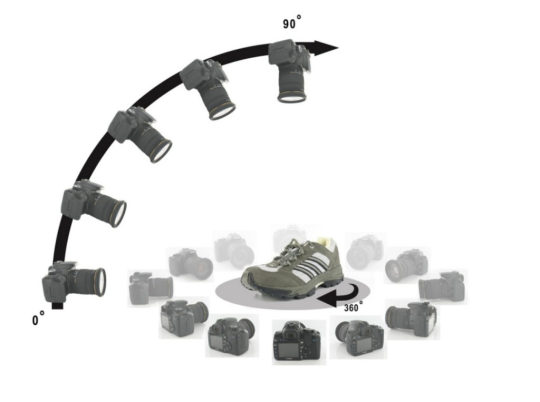
You may read Also: Food Photography Lighting Tips
Top Rated 360 Product Photography Studio To Hire
If you're looking for a top-rated 360 product photography studio to hire, you've come to the right place. At 360 Product Photography, we pride ourselves on providing our clients with high-quality, professional product photos that are sure to impress.
We understand the importance of great product photos, and we're dedicated to providing our clients with the best possible service. We offer a wide range of services, including product photography, 360-degree product photos, and video production.
We're confident that we can provide you with the best possible product photos, and we're always available to answer any questions you may have. Contact us today to learn more about our services, and to schedule a free consultation.
UK Clipping Path
UK Clipping Path is a premier provider of 360-degree product editing services. We have a team of experienced professionals who are skilled in capturing high-quality images of products from all angles. Our 360-degree Spin services allow businesses to showcase their products in the best light, giving potential customers a clear view of the product from all sides. This type of photography is perfect for online stores, as it allows customers to see the product from all angles and make an informed decision about their purchase.
FAQs:
What are the types of 360 product photography?
There are a few types of 360 product photography. The first is full 360 photography, which gives the viewer a complete view of the product from all angles. This is ideal for products that are small and have few details. The second type is partial 360 photography, which shows the product from several angles but does not show the entire product. This is ideal for products that are larger or have more intricate details. The third type is panoramic 360 photography, which gives the viewer a wide, sweeping view of the product. This is ideal for products that are very large or have many details.
How much does 360 product photography Cost?
360 product photography is an extremely versatile and powerful marketing tool that can show off your products in their best light, from every angle. The cost of 360 product photography will depend on the number of products you need photographed, the level of detail required, and the turnaround time you need. A professional photographer will be able to give you a more accurate quote based on your specific needs.
How many individual image frames should you have in your 360s?
There is no definitive answer to this question, as the number of frames you include in your 360s will depend on a variety of factors, including the purpose of the 360 and the desired final product. However, as a general rule of thumb, you should aim for at least 30 frames per 360. This will ensure that the 360 is smooth and fluid, and that there is enough detail and variation to give viewers a complete understanding of the space. If you are unsure how many frames to include, err on the side of caution and include more rather than less.
What is the difference between a 3D and a 360 image?
3D images are created by using two images taken from slightly different angles and then combining them to create the illusion of depth. 360 images are created by using several images taken from all around the subject and then combining them to create a full 360 degree view.
When should my products be shot in a 360° view?
Your products should be shot in a 360° view when you want potential customers to be able to see them from all angles. This is especially important for products that are meant to be used in a specific way, such as furniture or clothing. By seeing the product from all angles, potential customers will be able to get a better sense of how the product looks and functions in real life. 360° product shots can also be helpful in showing off features that might be difficult to see in a traditional photo.
conclusion
In conclusion, 360 product photography is the art of taking an image of an object or product from every possible direction so that a person can see it from every angle. 360 degree product photography helps retailers to increase sales by attracting visitors. A 360 photograph gives prospective buyers the ability to rotate an object or product from every angle. A business owner can get better views and attract more customers by placing a 360-degree image on his website, social media pages, blog, or blog.
8 notes
·
View notes
Link
2 notes
·
View notes
Text

Product Launch videography in Delhi
Our Product Launch videography in Delhi is a critical tool for companies and organizations looking to create buzz and generate interest around their new products. By working with our experienced videographer, you can create a compelling video that showcases the unique features and benefits of your product and helps to build excitement and anticipation among potential customers. Visit https://ankitnandwani.in/ for details.
#product launch videography in delhi#360 degree videographer in noida#digital video ads for photography in noida#product videographer in delhi
0 notes
Text
How to Capture Stunning Product Photos in 2023
Photography Trends -
It is a vital aspect of e-commerce, as it showcases your products in an attractive and authentic way
Photography Trends – Welcome to our blog, where we dive into the exciting world of product photography and explore the top trends that are set to dominate the industry in 2023. As technology evolves and consumer preferences shift, it’s essential for photographers and brands to stay up to date with the latest trends to create captivating visuals that engage and inspire. So, let’s unveil the…
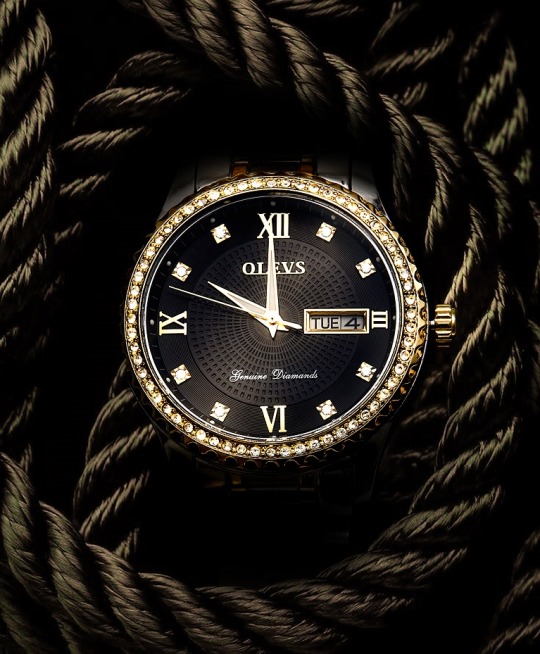
View On WordPress
#360-degree photography#beauty products#ecommerce photography#fashion#photography trends#photoshop tools#photoshop tutorials#Products in motion#professional photographer#professional photography
1 note
·
View note
Text
Interactivv Studios is a leading photography studio in Dubai. We provide e-commerce product photography and 360° virtual tour photography services. Contact us today.
0 notes
Video
fashion 360 video
The IGO studio helps capture stunning products photoshoot of your product on a budget, Check us out at isgoing.online
#product photography#product#productshoot#productvideo#360 video#fashion#shoefashion#shoeforwomen#canon
1 note
·
View note
Text
3D Interactive Virtual Tours of Commercial Real Estate
#3D Product Photography#360° Photography WA#3D Virtual Tour Seattle#virtual tour photography#Virtual Business Tour
0 notes
Text
Some highlights of the panel with Gavin Finney at @theineffablecon.
Gavin Finney is the director of photography on Good Omens.
Feel free to add things in the replies if you think we’ve missed something.
- He says that Good Omens is a very fun show to work on where you can really let your imagination go.
- One of the challenges with season 2 was to top season 1.
- Everything we see on screen is real. In season 1, the bookshop was designed to be flammable. (Edit- Note: this about the props and the details put in the creation of the sets).
- About the complicated camera move planned for the kiss scene: the plan was to have a moving 360 shot to highlight the fact that Aziraphale and Crowley are at the centre and everything around them is spinning. But the performance was simply so amazing that they didn’t want to take away from that with a fancy camera move so they decided to keep it simple. He also explains that the kiss is an example of something simple that works beautifully. The lighting was done on purpose.
- With season 2 it was possible to control the weather (scene where Crowley creates a storm). The change in weather also contributed to show a change in mood (Aziraphale’s, for instance, with bright and shiny weather when he’s happy).
- His favourite sets are the magic shop (full of wonderful props and tricks), the bookshop (designed to be the loveliest bookshop in London) and the Dirty Donkey pub.
- When it comes to do things on camera vs in post production: they tried to do as much as possible on camera (Hell was mostly on camera). Scenes looking down the street or Heaven are made/adjusted in post-production.
- About the minisodes: Neil and Douglas wanted them to be as different as possible from present day so that they would be their own self contained thing. To show that they used different camera lenses were (anamorphic lenses). The minisode with Job had a religious painting aspect, the 1827 Scotland one had a gothic/foggy aspect and the Blitz one was meant to be the epitome of film noir.
- The colours in S2 look more vibrant because they used a different camera system that captures more light and higher resolution. It’s also a result of post production colour grading.
@neil-gaiman
424 notes
·
View notes
Link
#360 photography#photography#360 product photography#360 degree photography#360 videography#360 drone photography#real estate photography#luxury residential properties#residential properties#usa
0 notes
Link

Editing your product photography is the next most important step for your product photography. It is the final touch that helps in bringing out the A-Game for your Product Photography.
#jewellery product photoshoot#360 product animation#how to edit product pictures#jewelry product photos#ecommerce product photography services near me#jewellery product shoot#how to edit product photos
3 notes
·
View notes
Text
Cinematography?? In MY BL??? Not as likely as you think.
TLDR: it's a joke!!! but also legit sometimes I see "cinematography in bl" and it's just some basic pictures with mid-tone lighting and blue t-shirts. Let's talk film terms like: aperture, panning, tilting, and movement in film so we can see what goes into cinematography (with sources!). Also if I name a show you like as "boring cinematography" don't send me hate mail I'll laugh
(examples used: Our Skyy2 vs kinnporsche, 2gether vs semantic error, 1000 Stars vs The Sign)
If I name a show you like in this post as "bad cinematography" be chill about it, like, I ain't saying you can't like it, I'm just talking about techniques here not personal likability or overall show quality. I like badly filmed shit too say hello to my collection of Friday the 13th Blue Rays we're just here to talk techniques and like, educational stuff okay?
So the straight (heh) textbook definition of "cinematography" is: the art of making motion pictures. Which, frankly, tells you nothing. Like it's not wrong~~ but it's not informative either. Cinematography covers a lot of what we, the audience, visually see on screen:
"Cinematography is the art of photography and visual storytelling in a motion picture or television show. Cinematography comprises all on-screen visual elements, including lighting, framing, composition, camera motion, camera angles, film selection, lens choices, depth of field, zoom, focus, color, exposure, and filtration." (source)
So let's talk movement in film.
So when I talk about movement, what do I mean? I mean the way the camera, the characters, and the environment moves within a frame.
This video on Akira Kurosawa's usage of movement in a scene is brilliant:
youtube
Something as simple as having rain or fire in the background of a shot can enhance the emotions of a scene vastly. it gives the scene depth - literal depth, not narrative depth - that would otherwise be missing.
The way the camera moves and transitions leading the viewers eye back and forth makes what you're watching more engaging. You aren't consuming these scenes, you are engaging with them. They are apart of the story itself, giving the environment life and texture so the characters within them matter more.
And, look, I get busting out Thee Akira Kurosawa might be unfair, but if we're gonna talk cinematography we can't not talk the importance of movement on film.
To understand good cinematography you have to understand what makes it good and as such what makes bad or mediocre cinematography.
In connection with movement we gotta talk about camera techniques like panning and tilting:
youtube
"Camera movements are a fundamental part of video production. They can be a powerful storytelling device, heightening tension, evoking emotions, and bringing the viewer into the action. Without saying a word, camera movements can transform a scene’s entire narrative, and direct audiences’ attention where you want it." (source)
So we have movement of environment, of characters, and we also have movement of the camera itself.
Ok so like, where does the BL come in Pikachu??
I'm getting to that, I'm going to start with a more general example: Our Skyy 2 (Bad Buddy meets 1000 Stars edition) vs Kinnporsche.
youtube
Starting at 5:17 we have Pran stranded or whatever, and this shot is like, it's fine. It's boring as hell, but fine. Why is it boring as hell? Well it's flat, it lacks movement, it lacks depth.
When the driver drove off the camera could have panned to follow his movement and then panned back to Pran at a different angle to showcase his isolation. Honestly since the scene starts with a mid close up of Pran, I would have had the camera behind Pran as the driver drove away, and had the camera pan around Pran 360 so we get shots of his environment, and him, while also emphasizing holy shit he's like, fucking stuck in the wilderness.
In general, there's a big lack of movement in the scene. The camera remains almost entirely static, there's no attempt at zooming in or out, following Pran's movement, or showcasing his environment in any meaningful way. Even when Pran begins walking towards the camera the angle of the framing is still centered, rather than tilted downward or upwards to give us more dimension (non-BL comparison, the Book of Eli starring Denzel Washington does the "walking towards the camera" shots really well).
We get a cut of a medium close up of Pran, with a deeper focus so his environment is blurred out.
I understand the thought process of this shot, we want the audience to focus on Pran, but if the point of the scene is to emphasize he's alone, confused, maybe even a bit anxious at his new circumstances it could've been done better. Take a wider shot from this angle, open up the lens to allow for that background environment to come through and show him isolated. Maybe do a pan above him or tilt the camera up going from his feet up as he nervously ruffles his hair. There's options here.
This just adds more walking to the scene, which we already had. It doesn't enhance or emphasize anything about Pran's emotions as a character.
Anyway the camera continues to follow him and then we get another cut. And it's from the same angle as before, only this time we see a truck coming. The camera remains static, it completely stops moving, and we just wait for the truck to drive into the frame.
This whole sequence of events ends at 5:57 and while not a long sequence I find it frustrating because it's boring. The only way the audience knows that Pran is anxious is via Nanon’s acting, there’s nothing in the filmmaking that enhances or contributes to that feeling.
He’s alone, until he’s not, and that’s all the scene tells us. It leaves the scene lacking any tension as well, because we’re not getting a sense of isolation - how large is this space? How alone is Pran right now? What is the entirety of the environment?
Contrast this with a similar scene in kinnporsche ep06 where Kinn and Porsche are alone in the mountains. I don't have a video of this specific scene so I have to link the trailer, starting at 1:48 to 1:52, but see how we start mid-close up of Kinn and Porsche, then pan out from above them? This is a better showcasing of just how vast the environment around Kinn and Porsche are.
They're still center frame throughout all of this, the depth of the scene is in mid-focus so nothing is blurred out and you can see the sharpness of the environment.
It also places the audience in the same space as Kinn, who is looking up at the sky while the audience looks down at him. It makes the audience a more active participant in the shot, emphasizes the state of the characters, gives the audience a sense of space & environment, and relies a sense of emotion.
The additional fast zoom out also adds to the scene by adding movement and making it more dynamic.
youtube
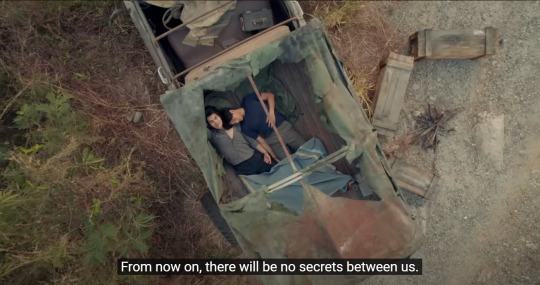
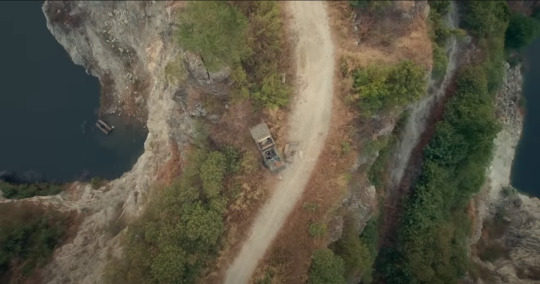

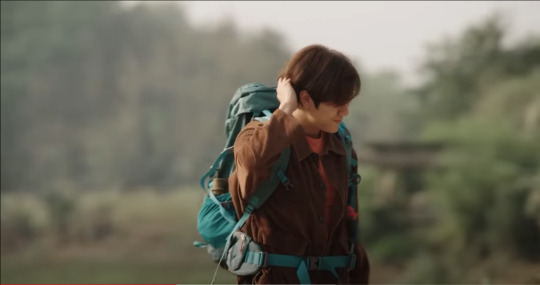
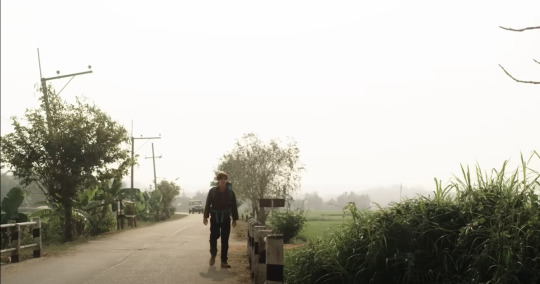
(my man pran looking like this 🧍)
Both these scenes are pretty short, but they're relaying similar information and one is way more dynamic and effective than the other. Both Pran and Kinn/Porsche are alone in the wildness, but in the latter there's a lack of space, a lack of movement, and a lack dimension. This is mainly a framing issue, so let's talk more about camera movement (panning, & tilting).
Here's a scene from 2gether vs a scene from Semantic Error.
youtube
(saw someone say 2gether had a high production value and chepie where??)
This entire scene with Sarawat and Tine is flatly shot. There is nothing in their background so no outward movement is happening, the lighting is even as are the colors, everything is at the same depth, and there's little to no motion in the camera.
The scene with Sarawat pushing Tine into frame. Why doesn't the camera follow Tine's motion of movement so the scene has more momentum? It just stops and the char falls out of frame before walking back into it. Then we get a series of cuts back and forth of close ups on Sarawat and Tine's faces. Back and forth, back and forth.
The editing leaves a ton to be deserved because if the back and forth did a quick pan back and forth with each beat we could build up tension, give the scene some texture, heighten the intensity of the argument. If we're going for something softer we could place them in on better set, or make the characters move themselves - have Sarawat walk away from the argument up those stairs, have the camera follow his movement as Tine chases him continuing the argument - or play with the lighting a bit, pan the camera down or tilt it something!
When Tine kisses Sarawat why doesn't the camera move with him in a more notable way? Why did we have a cut to a close up? And then we're back in a mid close up and more cuts and this editor is killing me!
This scene is 4mins long and the only engaging bit of filmmaking here is when the camera follows Tine when he steps closer to Sarawat putting the latter in the frame at 3:15, the entire scene is 4 minutes long.
I want to compare this scene to this scene in Semantic Error which is also all dialogue and also obviously filmed on a shoestring budget.
youtube
So right away the camera work here is smart, it starts off in an establishing shot, evenly lit, of Sang Woo and Jae Young both in the frame. Then we get a mid close up of JY looking down, then a tight close up of JY looking up.
The change in camera angle emphasizes his surprise at seeing SW here as he looks up at SW. The lighting has also changed, it's much brighter now. The camera also begins to move, where it was static before it begins to tilt and shift.
We get a cut to SW, the first one of this scene. JY is seeing SW in a new light for the first time, and as such so is the audience. By starting the scene off in an outward shot with both chars in the frame, they are placed on the same level and the audience doesn't see their expressions up close. So when we're hit with JY's close up of surprise and then SW's close up of his wet hair it holds way more impact. It enhances the feelings of JY's character for the audience.
The lighting behind SW has also changed, it's much brighter, and warmer compared to the cooler tones of light behind JY. The camera also slows, and continues to to tilt and shift. JY's world has literally been shifted on his axis.
We get another cut, this time medium on SW and notice, the camera stops moving for that moment and the light around him dims. It's not as saturated. We're moved out of JY's pov here and back into "regular" framing.
SW tries to make JY leave, we get a close up cut of the cut on JY's arm - hey editing used to display important and new information! - then the camera cuts to SW getting medicine and here's a small but important thing, when he tosses at JY the camera follows his movement. And instead of cutting away, when JY gets up thinking SW is hurt, the camera follows JY's movement back towards SW.
It would have been easy to make a cut there back and forth - like in the 2gether scene did over and over - but following the movement of the characters makes the scene way more interesting visually to watch.
Changing the angles of the camera from a lower angle (where JY is looking up) to a downward angle (where SW is looking down) makes the scene more interesting visually as well and enhances the storybeat of JY looking up at SW in a new light memorized. This contributes to the story as well, as it's JY who catches feelings for SW first so their are literally, on uneven ground until they're not later in the story. The camera is panning, tilting, moving with the characters even given the limited space. The lighting adds to the effectiveness, as do the minimal cuts.
On a technical level, the scene in Semantic Error is just better filmed. In my own opinion, the scene is far more engaging b/c the filmmaking is better, where in 2gether the reliance is almost completely on the actors to sell the scene with little help. And I'm not saying nothing about Bright and Win cause their stans wildin'.
Next, I wanna talk about aperture.
I saw a post that used this word and I didn't understand the context in which they were using it because aperture isn't a style of filmmaking its a camera setting or lens adjustment - it's the rate at which the camera opens and closes letting in light and focus.
"Aperture is the opening of the lens through which light passes. When you hit the shutter release button to take the picture, the camera aperture opens to the predetermined width, letting a specific amount of light through. A large aperture lets more light in, and vice versa. Aperture is calibrated in f/stops, written in numbers like 1.4, 2, 2.8, 4, 5.6, 8, 11 and 16. The larger the number, the narrower the aperture." (source) <- really recommend this article if you want to learn about aperture in film.
A great non-BL example of aperture used for style is One Piece Live Action where cinematographers Nicole Hirsch Whitaker, and Michael Wood love using deep focus aperture in a lot of scenes.
But let's compare The Sign vs 1000 Stars.
youtube
youtube
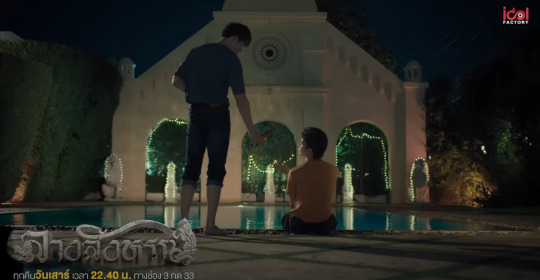

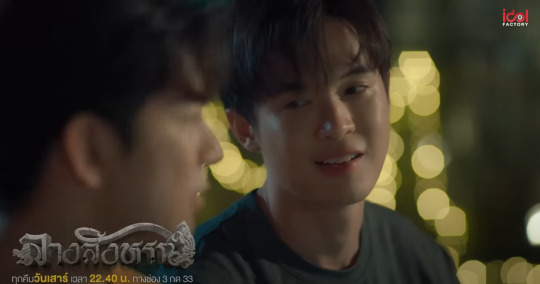
So when the scene starts, we're in mid-focus/aperture, everything is of similar sharpness and depth. Nothing is especially blurred out we're getting the full spectrum of Phaya and Tharn's environment.
When the camera switches to close ups of Phaya and Tharn however, we get a deep focus aperture. That's why everything behind them is so blurred out. In a close up of Phaya, even Tharn's face is blurred. The director wants the audience to focus specifically on these characters individually, so we can understand the weight of their dialogue. But when the camera wants us to see the characters as a unit, it cuts, pulls back out of that deep focus and everything is back in mid-focus again.
Here's another thing, it's subtle but it's important.
This scene also combines what we already discussed about movement. At :08 of the scene, in that first mid-shot the camera is actually zooming in closer on Phaya and Tharn. Not dramatically, subtly, but it is there. This is important, because at 3:23 we get another mid-shot of them, pulled out of that deep focus, and the camera begins to zoom out.
The camera also follows the movement of Phaya grabbing Tharn's hands, then pans back up to Phaya's face once again before panning higher into the frame and panning back to their faces and zooming in.
When we move back out of that deep focus, into a mid-shot the camera continues to zoom out on the two characters as they kiss.
I saw someone say that this scene wasn't "filmed like BL kisses" and, eh? Like it isn't filmed in that static style of filmmaking which has dominated BL filmmaking probably due to budgetary reasons. But
The Sign follows a similar filmmaking style as Kinnporsche and Domundi shows do. But also just like, basic filmmaking techniques you'd see in shows of the non-CW/soap variety.
The thing fans are seeing here is film technique (probably partially due to a larger budget). Movement, lens adjustment, panning and titling, lighting and color are all playing a role in this specific scene.
Cinematography baby.
(sidenote the VFX of The Sign is dope as fuck too)
Okay so let's talk Our Skyy 1000 Stars
youtube
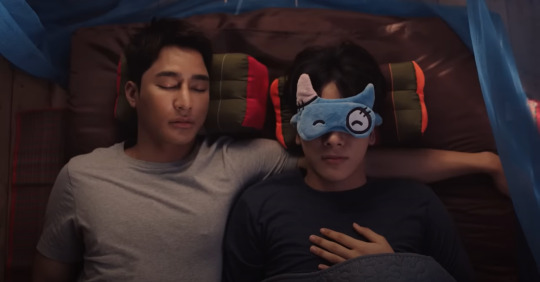
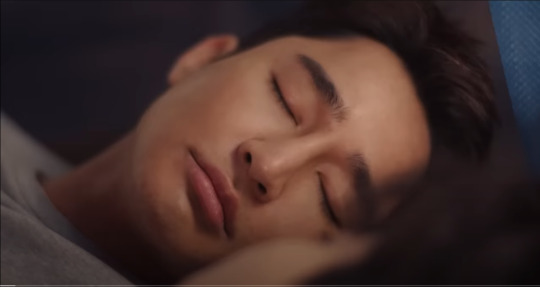
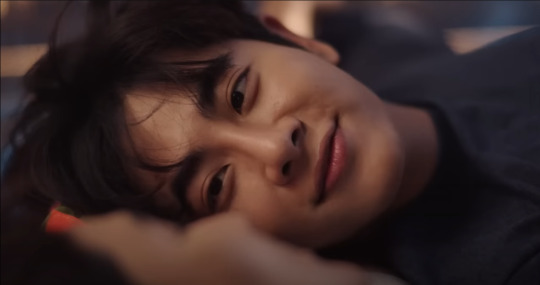
So this opening scene follows a similar structure to the scene in The Sign: mid focus shot of the two chars, into separate deep focus close ups. It's also a dialogue heavy scene like the one with Phaya and Tharn.
So why does their scene work better on a technical level than this one in Our Skyy 2?
The scene in The Sign combines techniques of aperture, movement, lighting, color and framing to give everything more impact.
In this scene with Phupha and Tian we get a similar editing style as the scene in 2gether: lots of back and forth cuts, very tight close ups, static camera movement. Where as the camera zooms in and out during mid-shots, the camera doesn't move in Our Skyy 2. It remains motionless even though a zoom in as the two characters lay in bed would add a lot to the scene itself.
In the close ups the camera continues to remain static, only changing angles when there's a cut. At 1:22 Phupha moves his arm to wrap around Tian, the camera could have taken a closer shot at his arm, and then followed his movement as he wraps it around Tian. Like how the camera followed Phaya's movement when he holds Tharn's hand.
Instead it's just a flat shot, we see his arm wrap around in a mid-focus above shot. The camera does move to follow Tian a couple times - at 1:50 for example. But overall, the scene is stiff - who sleeps like this frfr - in framing, in movement, in depth.
I want to say that I don't think this scene is bad - like I do the 2gether scene or the earlier scene with Pran - I think it's just, okay~~
And no, for none of these examples did I pick "the worst" shots or whatever. I'm not out to get any specific show, but tried to find comparable scenes and compare and contrast the filmmaking techniques used in both and how effectively they were used.
I want to leave off with this.
There's a lot that goes into cinematography, yes this singular shot of Furiosa is amazing, but what makes the scene amazing?

youtube
Pay attention to how the camera moves (panning and tilting), when the camera moves (zooms in and out), the movement of the scene (the hair and sand moving), the lighting (Furiosa from behind is in darkness, her side profile more lit), the depth of the scene itself changing (as she walks away from the group the focus/aperture gets deeper on her, then when she walks out of the frame it grows larger to focus on the characters left behind).
All these little things make up what is "cinematography". The more you learn about the techniques used the more you can notice about film and what makes a scene powerful.
As BL gets more budget we're seeing shows expand their filmmaking catalogue more and more. Which is exciting! If fandom is gonna talk cinematography I think it's helpful to have the vocab to do so, and it's cool to watch a scene and be like "oh I see what they're doing here and why and how".
I mentioned other things that go into cinematography like framing, lighting, color, and there's also editing (which is separate). Idk if I'll make a post about those things cause I'm lazy and this shit takes forever to research and write but who knows~~
Check out other posts in the series:
Film Making? In My BL? - The Sign ep01 Edition | Aspect Ratio in Love for Love's Sake | Cinematography in My BL - Our Skyy2 vs kinnporsche, 2gether vs semantic error, 1000 Stars vs The Sign | How The Sign Uses CGI | Is BL Being Overly Influenced by Modern Western Romance Tropes?
[like these posts? drop me a couple pennies on ko-fi]
#the sign#the sign the series#kinnporsche#gmmtv series#gmmtv#chaos pikachu speaks#chaos pikachu metas#fuckign a i should open a ko-fi this shit takes forever to write#pikachu's bl film series
162 notes
·
View notes
Text
THIS DAY IN GAY HISTORY
based on: The White Crane Institute's 'Gay Wisdom', Gay Birthdays, Gay For Today, Famous GLBT, glbt-Gay Encylopedia, Today in Gay History, Wikipedia, and more … April 13



c.435 BC – The Greek philosopher Aristippus was born on or around this date (d.circa 360 BC). He was a pupil of Socrates, but adopted a very different philosophical outlook, teaching that the goal of life was to seek pleasure by adapting oneself to circumstances and by maintaining proper control over both adversity and prosperity. Aristippus held that the highest purpose and virtue was the pursuit of pleasure.
Aristippus was born at Cyrene. He came over to Greece to be present at the Olympic games, where he fell in with Ischomachus the agriculturist, and by his description was filled with so ardent a desire to see Socrates, that he went to Athens for the purpose, and remained with him almost up to the time of his execution, 399 BCE
One work attributed to "Aristippus" in ancient times was a scandalous work entitled On Ancient Luxury (or On the Luxury of the Ancient Greeks). This work, judging by preserved quotations was filled with spicy anecdotes about philosophers and their supposed taste for boy-lovers and courtesans. The author supports his claims for Plato's various erotic relationships through his quotation of epigrams attributed to the philosopher.
"The art of life lies in taking pleasures as they pass, and the keenest pleasures are not intellectual, nor are they always moral." - Aristippus

1841 – Michigan amends its sodomy law to specify that emission of semen is not necessary for completion of the crime.


Molinier - Self-portrait
1900 – Pierre Molinier was a painter, photographer and 'maker of objects' (d.1976). He was born in Agen (France) and lived his life in Bordeaux. He began his career by painting landscapes, but his work turned towards a fetishistic eroticism early on.
Molinier began to take photographs at the age of 18, and started his erotic production around 1950. With the aid of a wide range of specially made 'props' - dolls, various prosthetic limbs, stiletto heels, corsetry, dildos and an occasional confidante - Pierre Molinier used his own body as the basis for surreal and fantastic distortions of the human form, blurring sexuality and gender and ultimately producing a large body of photographic work. Most of his photographs, photomontages, are self-portraits of himself as a woman.
By combining costume, props, photography and photomontage he stepped beyond mere photographic representation of himself and his models to create a bizarre and distorted world of gender-confused fetishism and auto-eroticism.
He began a correspondence with André Breton and sent him photographs of his paintings. Later Breton integrated him into the Surrealist group. Breton organised an exhibition of Molinier's paintings in Paris, in January-February 1956.
In 1976, as his health began to decline, Pierre Molinier lay on his bed in front of a mirror, masturbated and committed suicide by shooting himself. The staging of his death initially led police to suspect he had been murdered but it seems that his death was Molinier's final creative act.


1936 – Win Ng (d.1991) was a Chinese American sculptor, industrial designer and illustrator. He is best known as the co-founder of the groundbreaking San Francisco based handmades department store Taylor & Ng.
Ng was born in Chinatown, San Francisco. He studied at the City College of San Francisco and San Francisco State University. After serving in the United States Army he studied at the San Francisco Art Institute receiving a Bachelor of Fine Arts degree in 1959.
Ng was openly gay.
In 1965 Ng met artist Spaulding Taylor and shifted his focus toward utilitarian work. The two founded Environmental Ceramics (the precursor to Taylor & Ng) and moved into creating handmade artware and homewares. The company called Taylor & Ng was founded during the same period and, with the addition of Win Ng's brother, Norman Ng, as president, grew into a major producer and retailer of housewares.
Through their own San Francisco department store and wholesale business, Taylor & Ng not only created a signature style still in demand by collectors, but helped to popularize Asian culture and cuisine. The Taylor & Ng company is credited with bringing the Chinese wok to the U.S. and making it a common kitchen utensil.
Ng died on September 6, 1991 from AIDS related complications. He was 55.


1937 – On this date the award winning playwright Lanford Wilson was born (d.2011). Considered one of the founders of the Off-off Broadway theater movement, Wilson received the Pulitzer Prize for Drama in 1980, was elected in 2001 to the Theater Hall of Fame, and in 2004 elected to the American Academy of Arts and Letters.
Wilson was raised in Missouri by his mother, but in 1956 he moved to California, where he worked and attended college. There, Wilson lived with his father, who did not accept Wilson's homosexuality, and so, in 1957, he moved to Chicago, where he worked as a graphic artist and studied playwriting.
Wilson began his active career as a playwright in the early 1960s at the Caffe Cino in Greenwich Village, writing one-act plays such as Ludlow Fair, Home Free!, and The Madness of Lady Bright. The Madness of Lady Bright premiered at the Caffe Cino in May of 1964 and was the venue's first significant hit. The play featured actor Neil Flanagan in the title role as Leslie Bright, a neurotic aging queen. The Madness of Lady Bright is considered a landmark play in the representation of male homosexuality. It was the longest running play ever to appear at the Caffe Cino, where it was performed over two hundred times. Wilson was subsequently invited to present his work off-Broadway, including his plays Balm in Gilead and The Rimers of Eldritch.
Wilson was a founding member of the Circle Repertory Company in 1969. Many of his plays were first presented there, directed by his long-standing collaborative partner, Marshall W. Mason. The Circle Rep's production of Wilson's The Hot l Baltimore won the New York Drama Critics' Circle Award, the Outer Critics Circle Award, and the Obie Award, and was adapted into a television program by Norman Lear. In 1979 Wilson received the Pulitzer Prize for Drama for Talley's Folly.
Wilson's style and approach has evolved over the years, sometimes resulting in drastically different effects. Some of his plays are extremely radical and experimental in nature while others clearly have a more mainstream, if still creative, sensibility. His first full length play, Balm in Gilead, is perhaps his most radical, yet it also remains one of his most popular. The play had a memorable off-Broadway revival in the 1980s, directed by John Malkovich, a co-production of Circle Rep and the Steppenwolf Theatre Company.
In addition to writing plays, Wilson has written the texts for several twentieth century operas, including at least two collaborations with composer Lee Hoiby: Summer and Smoke (1971) and This is the Rill Speaking (1992) (based on his own play).


1945 – Joseph Doucé (d.1990) was born to a rural family in Sint-Truiden, Belgium. He was a psychologist and Baptist pastor in Paris. He was openly gay and was among the founders of the International Lesbian and Gay Association. He served as a volunteer soldier in the OTAN base at Limoges (France), where he had time to perfect his French. After one year of pastoral and humanistic studies at Stenonius College (also known as Europaseminär, a Roman Catholic seminary today extinct) in Maastricht, the Netherlands, he began his conversion to Protestantism around 1966.
His Centre du Christ Libérateur was a ministry to sexual minorities. The center had support groups for homosexuals, transsexuals, sadomasochism and pedophiles.
Doucé was killed and the murder has never been solved. According to Doucé's lover, he was taken away by two men, who showed police badges on July the 19th 1990. The body was found in a forest in October 1990.
The killers are thought to be a unit of the French police, Renseignements Généraux, who investigated Doucé because of his support for pedophiles.

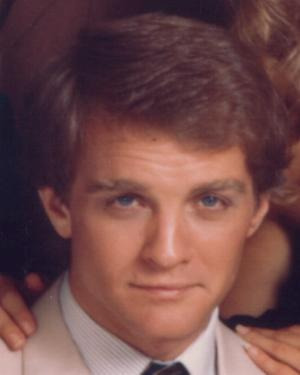
1950 – The American actor Terry Lester was born on this date (d.2003). Lester was born in Indianapolis, Indiana and began an acting career while at DePauw University in Greencastle, Indiana.
After years of musical theater, concert performances, numerous prime-time TV guest roles, and a season starring in the 1976 children's series Ark II, Lester had his big break when he joined CBS daytime soap The Young and the Restless (Y&R) in 1980. He created the role of Jack Abbott, a scoundrel who never met a woman (including his own father's wife) he didn't want to take to bed. Lester was so popular that Y&R creator William J. Bell wrote an entire family for him. Y&R was going through a transition period at this time and many fans believe that Lester's star quality helped the show build more viewers and eventually rise to #1 in the daytime soap ratings.
Lester kept his personal life under wraps, but a 2002 In Magazine LA article on former soap star Thom Bierdz claimed that Lester, along with Michael Corbett and Bierdz, made up a trio of gay actors who worked on The Young and the Restless in the 1980s.


1958 – On this date Harvey Lavan "Van" Cliburn, Jr. achieved worldwide recognition by becoming the first American to win the International Tchaikovsky Piano Competition in Moscow. He was all of 23.
In 1998, Cliburn was named in a palimony lawsuit by his alleged domestic partner of seventeen years, mortician Thomas Zaremba.


1966 – Martin Pousson is an American novelist, poet, and professor.
He was born and raised in Louisiana, in the Cajun French bayou land of Acadiana. Some of his favorite writers include Carson McCullers, Truman Capote and James Baldwin, as well as Denis Johnson and Junot Diaz.
His first novel, No Place, Louisiana (2002) told the story of a Cajun family and an American dream gone wrong. The novel won acclaim from Pulitzer Prize-winner Michael Cunningham and the Los Angeles Times, and it was a finalist for the John Gardner Book Award in Fiction.
His first collection of poetry, Sugar (2005) centered on the lives of outsiders, especially Cajuns, Southerners and gay men. Some of the poems also dealt with racism and the AIDS epidemic. He says that this collection would not have ever been published if it were not for a friend's saved copy of the manuscript. In 2005, he was named one of the Leading Men of the Year by Instinct magazine, alongside Jake Shears, Robert Gant, and Keith Boykin.
He is currently Associate Professor of English at California State University, Northridge, in Los Angeles. He teaches in the Creative Writing Program and the Queer Studies Program, and some of his most popular courses include Narrative Writing, Advanced Narrative Writing, Theories of Fiction, and Gay Male Writers.
He was named a recipient of the National Endowment for the Arts in Creative Writing for 2014. The NEA grant was awarded for a collection of short stories in development titled "Black Sheep Boy." The stories are about a homosexual boy coming of age sexually in the bayous of Louisiana. The stories also are about mental illness and werewolf myths.


1990 – Queer Nation – The direct-action group's inaugural action took place at Flutie's Bar, a straight hangout at the South Street Sea Port on April 13, 1990. The goal: to make clear to patrons that queers will not be restricted to Gay bars for socializing and for public displays of affection. More visibility actions like this one became known as "Queer Nights Out."


2014 – The Finnish Post announces that Tom of Finland (Touko Valio Laaksone) will appear on postage stamps.



13 notes
·
View notes
Text
Apple setting up new R&D center in Jerusalem

The tech behemoth will be opening its third such center in Israel, with the Jerusalem site seeking design and backend engineers for the development of Apple’s M1 processors used in Mac desktops and notebooks

Apple is setting up a third R&D center in Israel in addition to its center in Herzliya and Haifa. A LinkedIn post by a local Apple talent sourcer revealed that the company is setting up a new site in Jerusalem and that the center will mainly be focused on the tech giant’s M processors used in Mac desktops and notebooks. Last month, Apple announced that it is expanding its engineering R&D hub in the city of Rawabi in the Palestinian Authority, which currently employs over 60 engineers.
The Apple hub is run in partnership with Palestinian high-tech company, ASAL Technologies, and works in cooperation with the tech giant's R&D centers in Herzliya and Haifa, which currently employ 2,000 engineers. The teams in Israel are working to develop technology across Apple’s products, including innovations on silicon such as the M1 family of chips, and the depth-sensing camera that is instrumental to Face ID.
Apple’s development centers in Israel are based on a series of local acquisitions and an intensive recruiting spree in recent years. In December 2011, Apple acquired Anobit Technologies for $400 million. Anobit developed a chip that specializes in optimizing flash memories using unique signal processing technology. The company’s chips were integrated into Apple’s popular projects, such as the iPhone, iPad, and Macbook Air, even prior to the acquisition. In 2013, Apple acquired Prime Sense for $345 million. PrimeSense, which was famous as the company behind Microsoft’s Kinect motion-sensing system for the Xbox 360, developed a system that can translate body motion for computer games. The system, which combines both software and hardware, is based on a hardware controller that functions as a 3-dimensional sensor, which can detect and recognize movements and facial expressions. Apple’s other Israeli acquisitions include LinX Computational Imaging in 2015, RealFace (formerly Pickeez) in 2017, and Israeli photography startup Camerai (2019).
14 notes
·
View notes
Text
Best Ecommerce Photography Services Delhi NCR
Clicker Studio is a renowned photography studio in Delhi NCR, specializing in e-commerce product photography. They provide professional photography services and have worked with numerous clients in the e-commerce industry.Clicker Studio is another popular e-commerce photography studio based in Delhi NCR. They have a team of experienced photographers who specialize in capturing high-quality product images for online businesses.clicker studio is known for its expertise in e-commerce and catalog photography. They offer a range of services, including product photography, 360-degree product video, and ecommerce photography, creative photography, jewellery photoshoot
#ecommerce photographer in delhi#ecommerce photographers#product photography#model photography#ecommerce photography#creative photography#product photography in delhi
2 notes
·
View notes